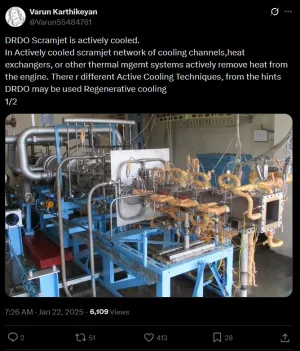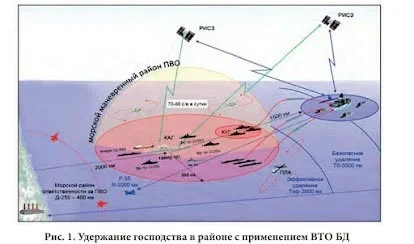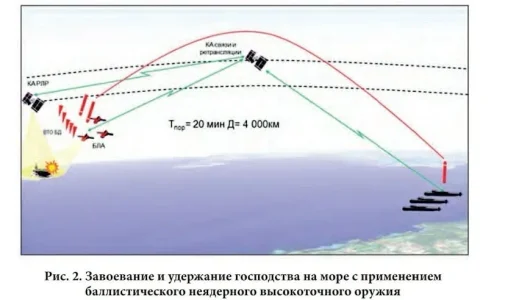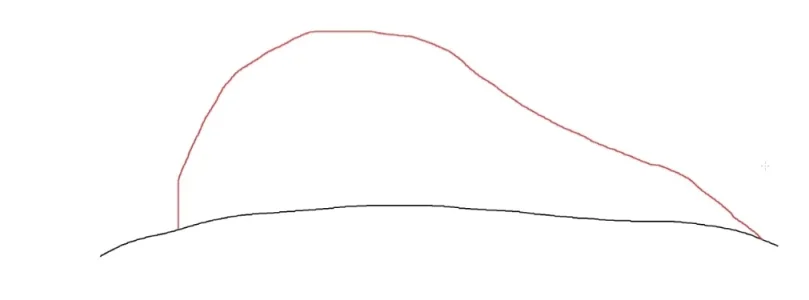The things scramjets requires is alot of cooling unlike scramjets the temperature isn't as high as in ramjet combustors. That's why Ramjet systems like Meteor & Solid fuel ducted ramjet use solid fuel which produces fuel rich gas. Another thing this above mentioned solid fueled ramjets systems don't fly that fast either there sole purpose is efficient cruise (2.5-3.5mach)while saving energy for end phase of air to air interception.
In order to tackle high temperatures our indigeneous scramjet has (active cooling)regenerative transpiration cooling it has internal channel linning combustors through which endothermic fuel is circulated which absorbs the heat and turns into vapour which is more efficient to burn than a liquid fuel.
In scramjets Metalurgy is not the only concern but endothermic fuel for cooling, regenerative transpiration cooling of combuster along with additive manufacturing for creating those channel in which endothermic fuel can be used as coolant, flame holder etc
One of the problem in scramjet is that the fuel has to burn very fast because of the fast stream the fuel best suitable for this application is small carbon chain hydrocarbons like ethane/ethyne.
Delayed ignition would make a very inefficient scramjet. Usual kerosene jp fuel aren't ideal for this application that's why even in Ramjet like brahmos hydrogen induced fuel is used which increases efficiency by 3% but efficiency is not the reason.
Hydrogen burns fastest among all it increases the burn rate of fuel which results in faster and efficient ignition inside Ramjet combustion chamber. it has very high specific impulse as well.
This same problems gets steroids in scramjet. Here hydrogen induced jp fuel can't be used either as most of it wouldn't burn inside chambers due to fast stream so most preferred in this use case is hydrogen it isn't handy another one is ethane & ethene but then this fuel can't be used as endothermic coolant. As we all know endothermic means heat is absorbed from surrounding in order to carry out change (chemical or physical)
One of the biggest challenge in scramjets is to manage those high temperatures.
A endothermic fuel should be such that it absorbs as much temperature as possible ethane isn't the one. But jp fuel does the job here. The straight carbon chain are preferred as they require more heat to break down absorbing more heat compared to branches chains.
Once combustion is initiated the endothermic fuel runs through internal channels absorbing heat and breaking down into the desired products which is then sent into combustors to burn.
Endothermic fuel is just isn't sending jp fuel through cooling channels but rather carrying out reaction such that only desired products are formed which could be ethane ethyne propane which are the most desired for scramjet.
This requires proper catalysts along with it the endothermic capacity of fuel can be increased used by adding water as you can see in the image.
This results in formation of free hydrogen & CO2 as I said earlier hydrogen has fastest burn rate among all which would again increase the burn rate of fuel
And most important more heat can be managed as H2O would require,absorb higher heat in order to breakdown into H2 + CO2. This solution es fundamental issues with scramjets.
Also as I said vapourised fuel burn much efficiently.
View attachment 31068
Most likely DRDO would prefer jp+H2O fuel as it gives very high specific impulse & high heat absorption.
The recent test was to verify this active cooling system.
Remember the first test only lasted 22-23 seconds it was to verify the combustion chamber,flame holder basic stuff.
It lacked cooling channels.
While the recent tests successfully verified this regenerative transpiration cooling & endothermic fuel. Which lasted 120 seconds. this one should have had those internal cooling channels.
Can't believe we have came so far.




 -2 isn't gonna happen because there is no such thing as Scramjet Hypersonic with Russkies, they have been fooling us all these time.
-2 isn't gonna happen because there is no such thing as Scramjet Hypersonic with Russkies, they have been fooling us all these time.


